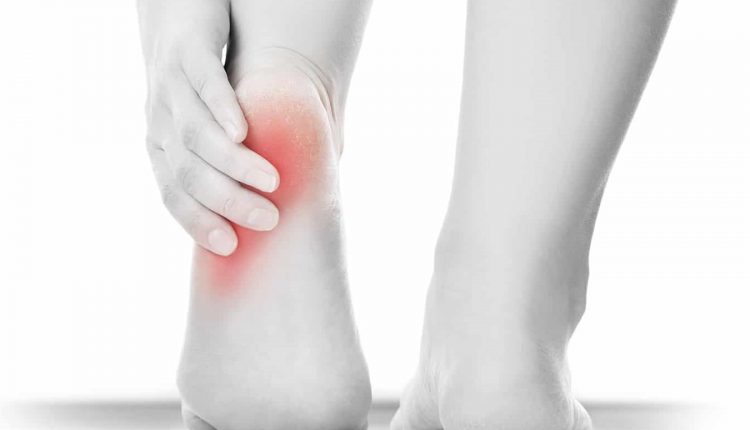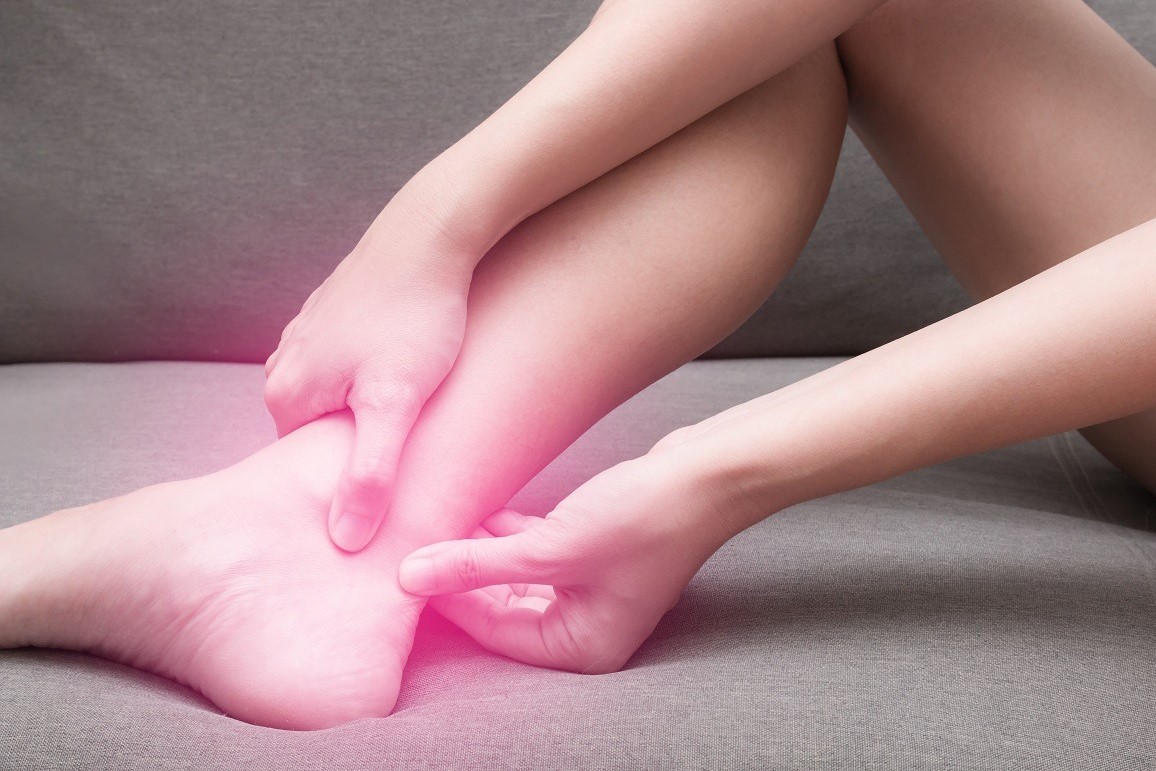
What is calcaneal spine? Causes, symptoms and treatment of calcific enthesitis
Calcaneal spine, scientifically known as calcific enthesitis, is the deposition of calcium salts at the origin of the tendons in the plantar fascia, just under the heel
It mainly affects women aged 40 and over, and is more common in pre-menopausal women, as they are affected by a physiological change in calcium production (osteoporosis).
Causes of calcaneal spine
The cause of the formation of the calcaneal spine is to be found where it all begins, in the plantar fascia which originates in the front face of the heel.
The tendons that make up the initial part of the fascia, if subjected to abnormal tension, tend to stretch, to ‘tear’ from their origin.
Our body, in defence, begins to deposit calcium salts to ‘reinforce’ the natural position and restore the original balance.
Calcaneal spine: the symptoms
The problem, however, is that these calcium salts are like crystals, with sharp and irregular edges, and if they touch or are close to the nociceptive nerve endings, they cause in the subject
- an intense, burning pain;
- a continuous stinging sensation in the plantar-calcaneal area, which prevents them from making the simplest movements such as walking.
The pain only occurs when pressure is exerted, i.e. that of the whole body on the foot, and is felt more strongly at the start of activity: if one sits for a long time, when one stands up, the pain will be much stronger than when one is in the middle of walking.
In calcific enthesitis, the pain is not proportional to the size of the spine: sometimes, asymptomatic spines of 2-3 centimetres in length are detected by chance on x-rays taken for other purposes.
While others, perhaps only a few millimetres long, can cause acute pain.
It all depends on how these calcium salts affect the nerve endings of the nociceptive nerve.
How the diagnosis is made
The diagnosis of calcaneal spine can be made clinically by an orthopaedist or podiatrist by detecting precise signs typical of the condition (e.g. pain).
For greater diagnostic certainty, the most precise instrumental examination is represented by a simple X-ray, which gives knowledge of the presence and size of the spine itself.
Treatment of a calcaneal spine
When the pain is not very acute, it is easier to live with, but if it is intense, how can we treat it?
The surgical indication in these cases is not frequent.
It is only very rarely that such an operation is carried out.
Treatment is usually conservative.
Remedies
Let’s imagine that the heel is like a pendulum, moving back and forth.
Posteriorly it is pulled by the triceps suralis (calf), anteriorly it is held by the three plantar fasciae.
The aim would be to pull the heel less, without affecting the insertion of the plantar fascia.
To do this, certain aids are required:
- appropriate footwear;
- specific insoles;
- shock waves.
Shoes suitable for calcaneal spine
With regard to the use of appropriate footwear, the main indication is always to have a minimum heel height:
- at least 2 cm high for men
- at least 3-4 cm high for women.
The heel should be wide, because it is more stable and helps the tendon to relax and de-inflate.
Shoes with heels can be worn continuously for about 6 months to a year, depending on the person’s needs.
If the heel should become inflamed again, they can be worn again.
Insoles
When the pain is continuous, it is necessary to intervene with specific patient-specific orthotics (insoles).
There are different types:
- heel cushioning insoles, which have a shock-absorbing function, protect the heel from impact and reduce pain symptoms;
- made-to-measure footbeds, the purpose of which is to regulate the formation of the plantar vault, placing the foot in the most correct position. In addition to this, a posterior anti-shock pad with Viladot’s comma-shaped outlet is inserted to prevent inflammation of the tendon when it is pulled during walking.
Shock waves
Shockwave treatment usually involves 3 sessions per cycle (one week apart), followed by 1 month’s rest, another cycle, another month’s rest and finally a final cycle.
Shock waves work by smoothing the edges of the calcium salts, rounding them off and making them less painful. In this way, the inflammation is removed.
But beware: performing shockwaves without addressing the cause of the pain is not helpful, as the tendon will continue to become inflamed.
For this reason it is necessary to wear heeled shoes or orthotics in parallel.
Podiatrist’s advice for calcaneal spurs
There are no exercises that can be performed for a calcaneal spine problem.
One must try to rest the inflamed fascia, proceeding twice a day with cold water showers (not foot baths), localised only in the painful area, to give greater relief.
But that’s not all:
- It is absolutely forbidden to walk barefoot: even if you get up at night to go and have a glass of water, you must necessarily wear slippers with heels; even at the beach it is always better to wear suitable footwear because the heel sinks more, making the inflammation even worse;
- shoes that are too low (e.g. ballerinas) are forbidden: there must always be a minimum heel (perhaps even an internal heel);
- pay attention to your weight: it is clear that being overweight is an important problem for calcaneal spine because the more weight you put on your feet, the greater the pain caused by calcaneal spine will be.
Read Also:
Emergency Live Even More…Live: Download The New Free App Of Your Newspaper For IOS And Android
Wrist Fracture: How To Recognise And Treat It
Carpal Tunnel Syndrome: Diagnosis And Treatment
Knee Ligament Rupture: Symptoms And Causes
Knee Sprains And Meniscal Injuries: How To Treat Them?




